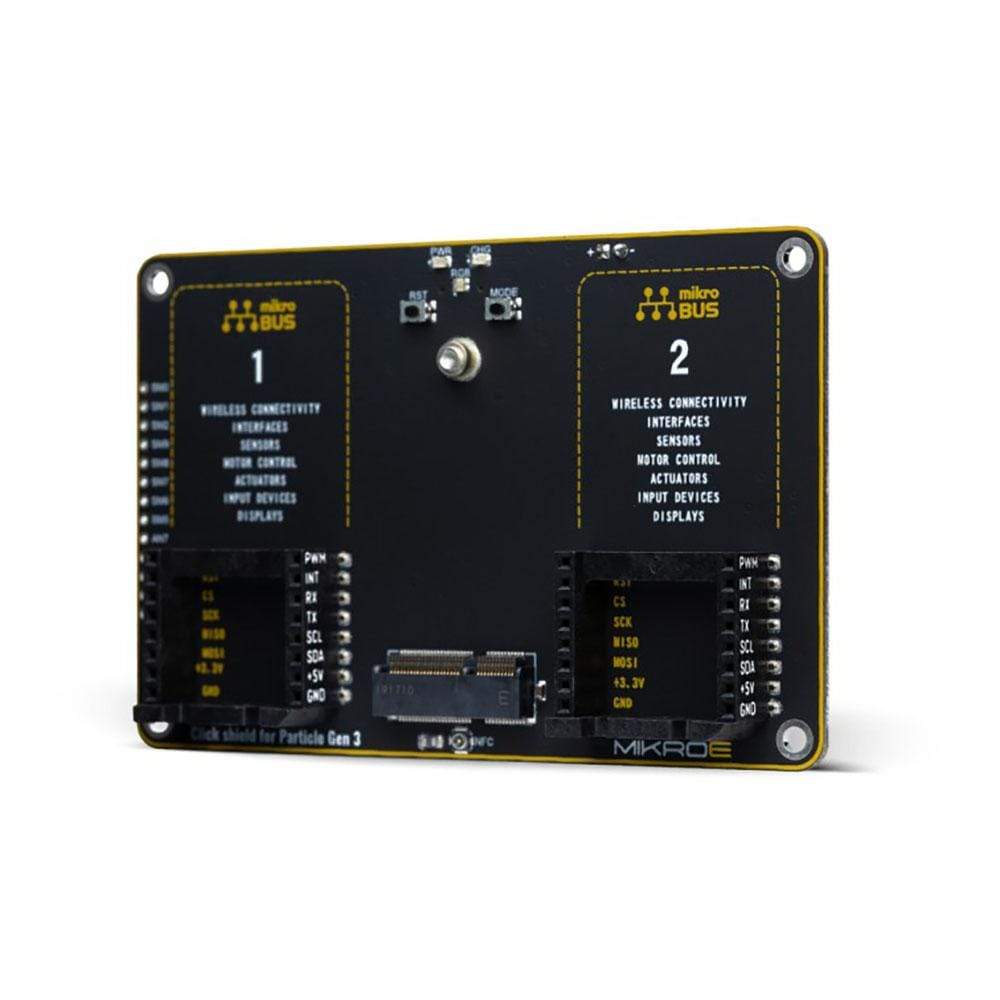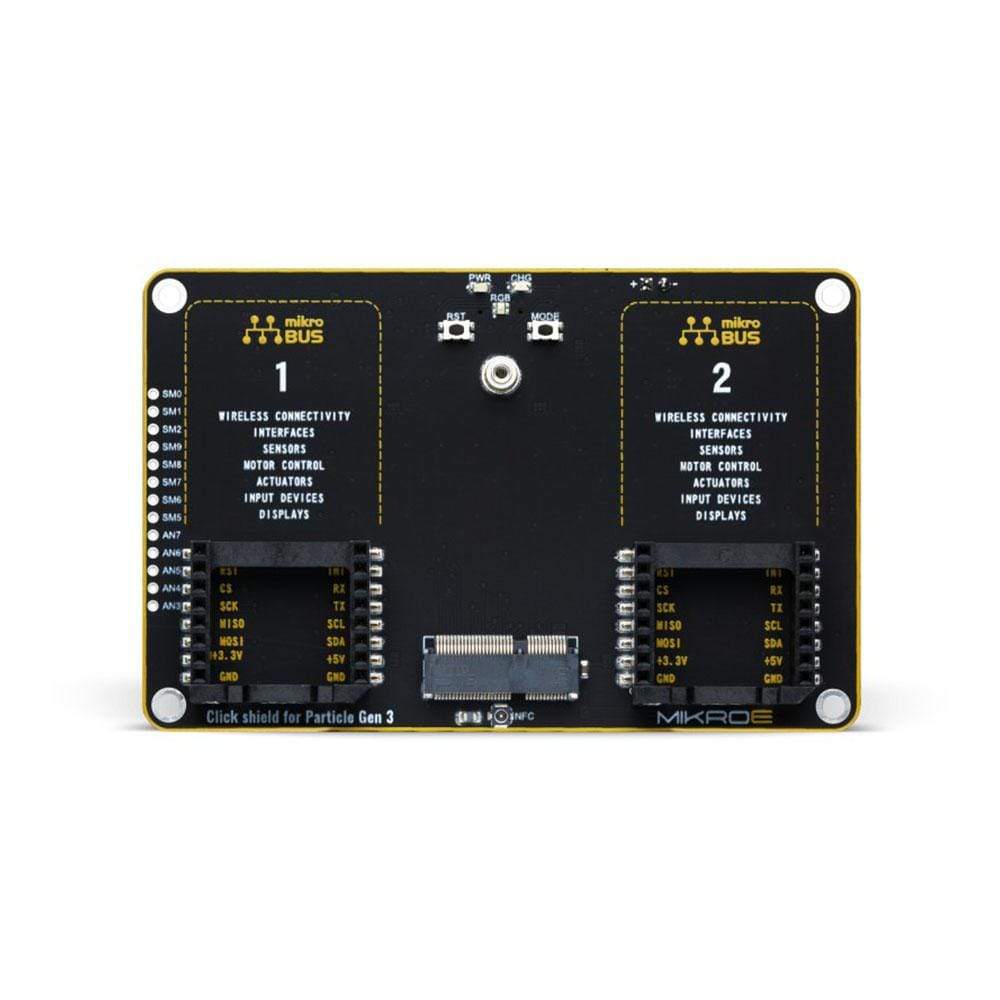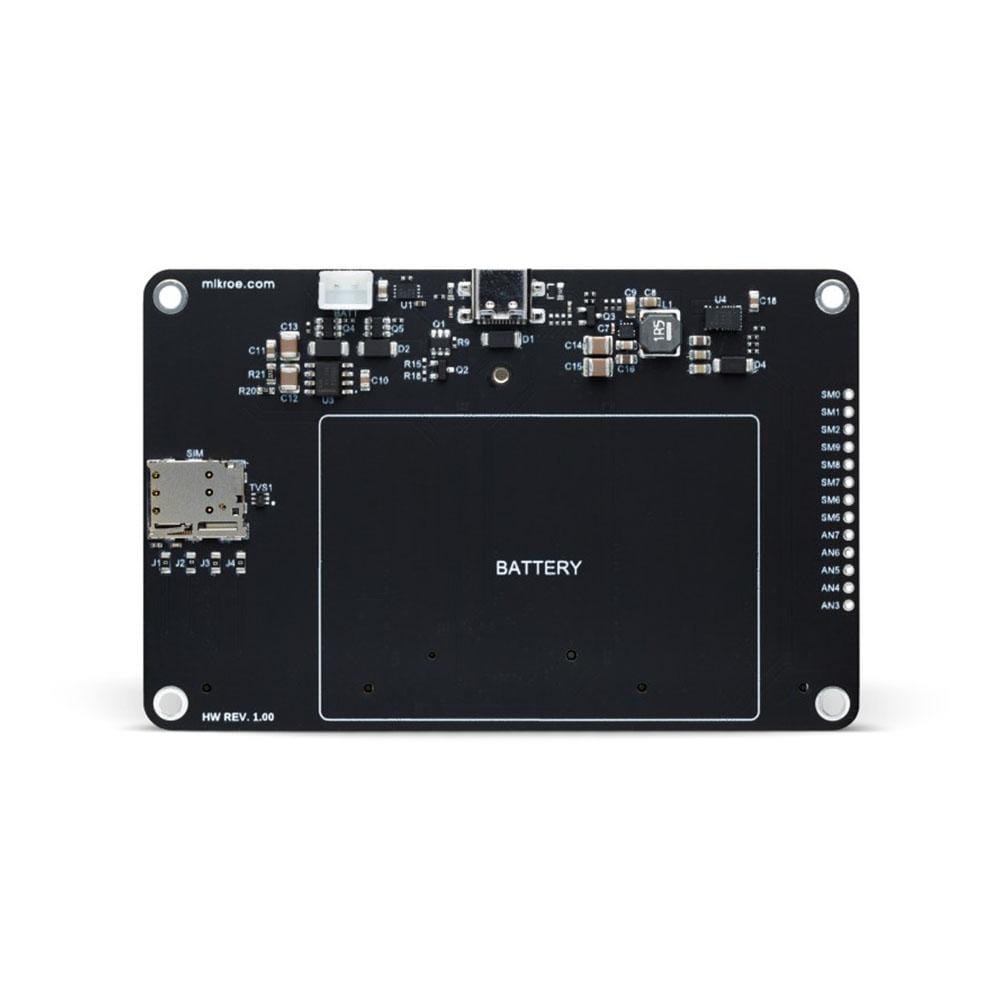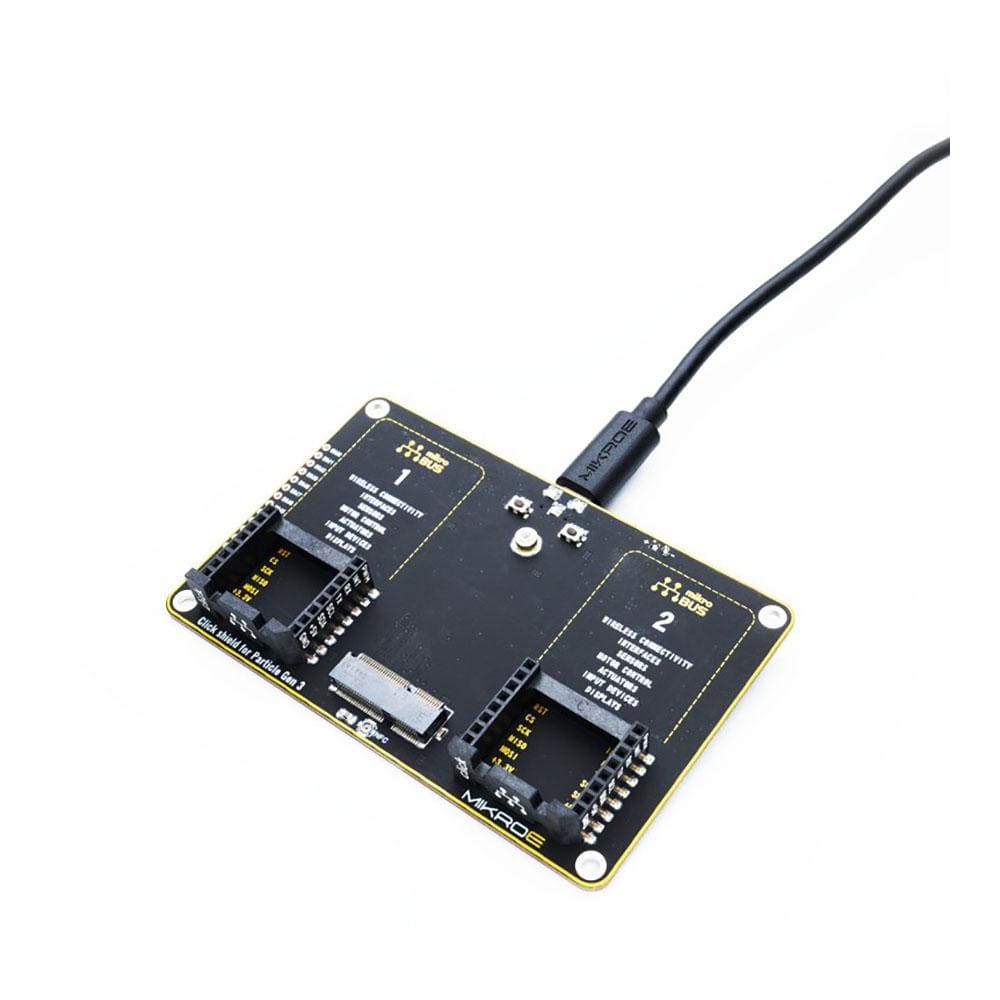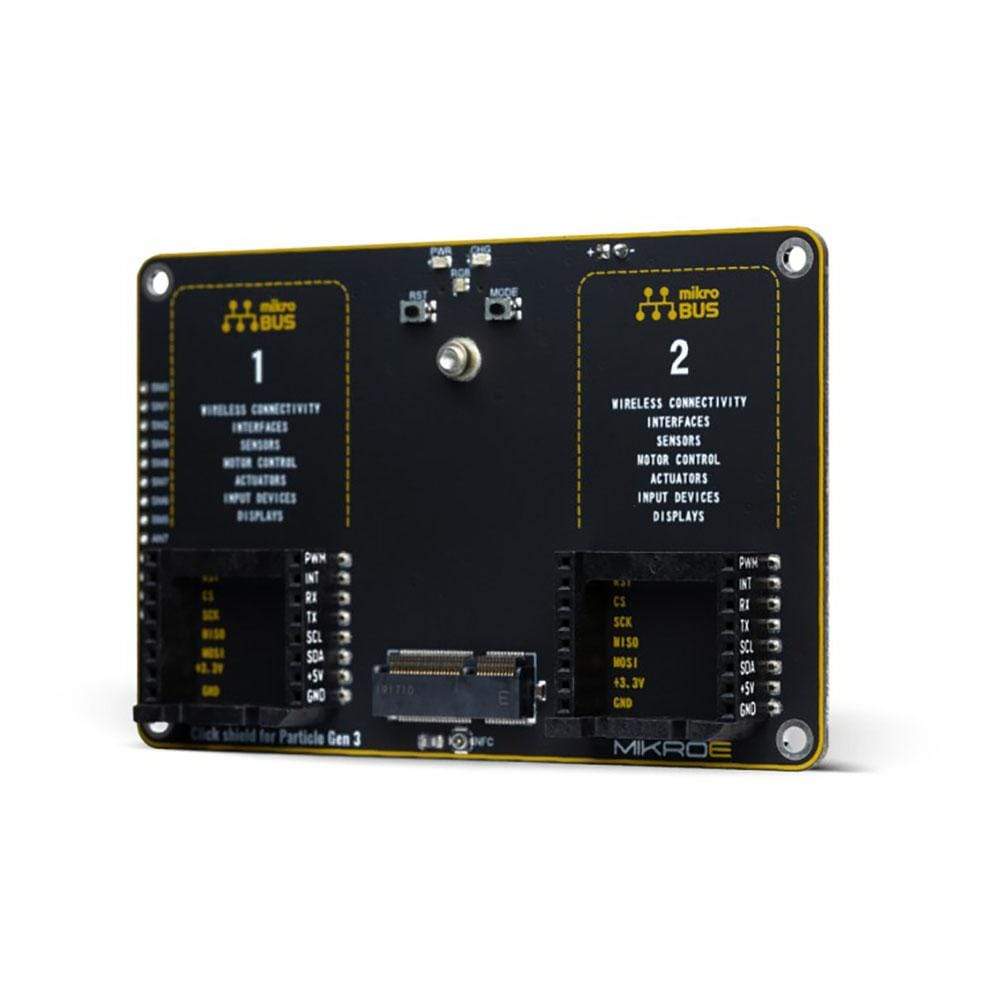
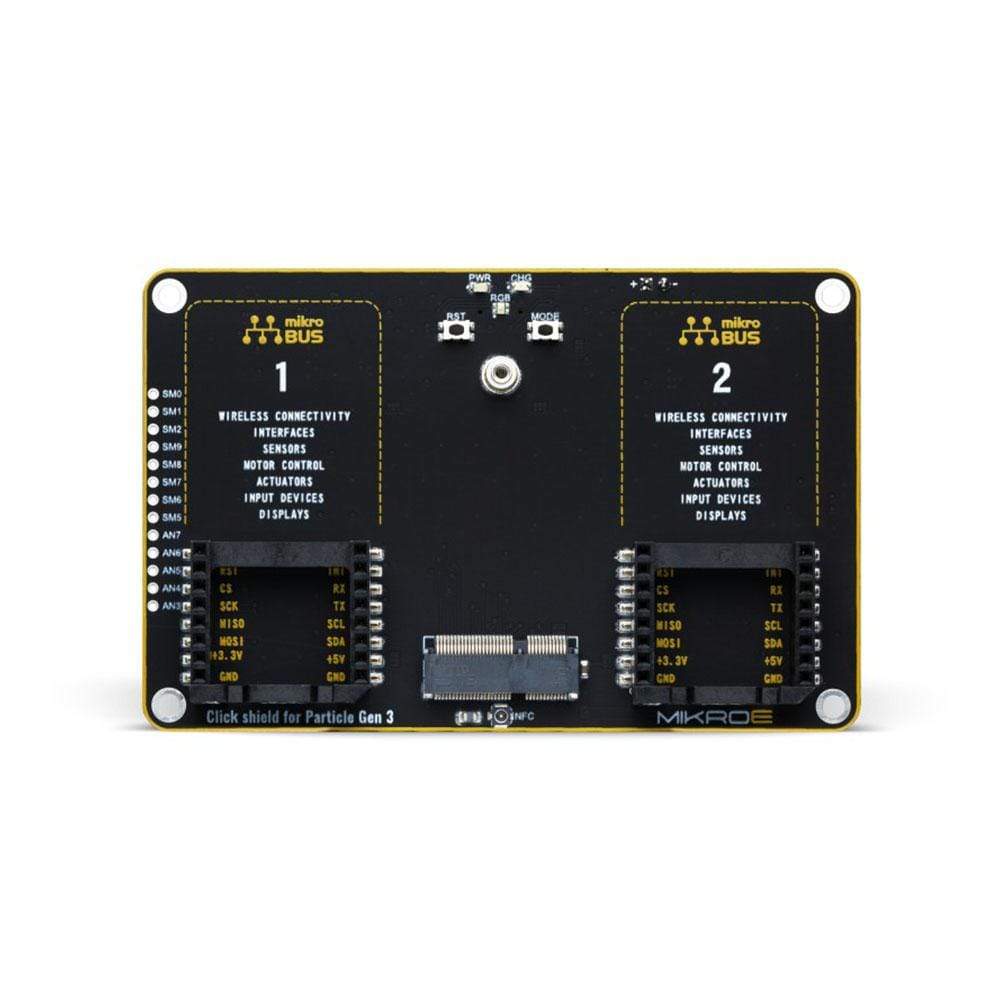
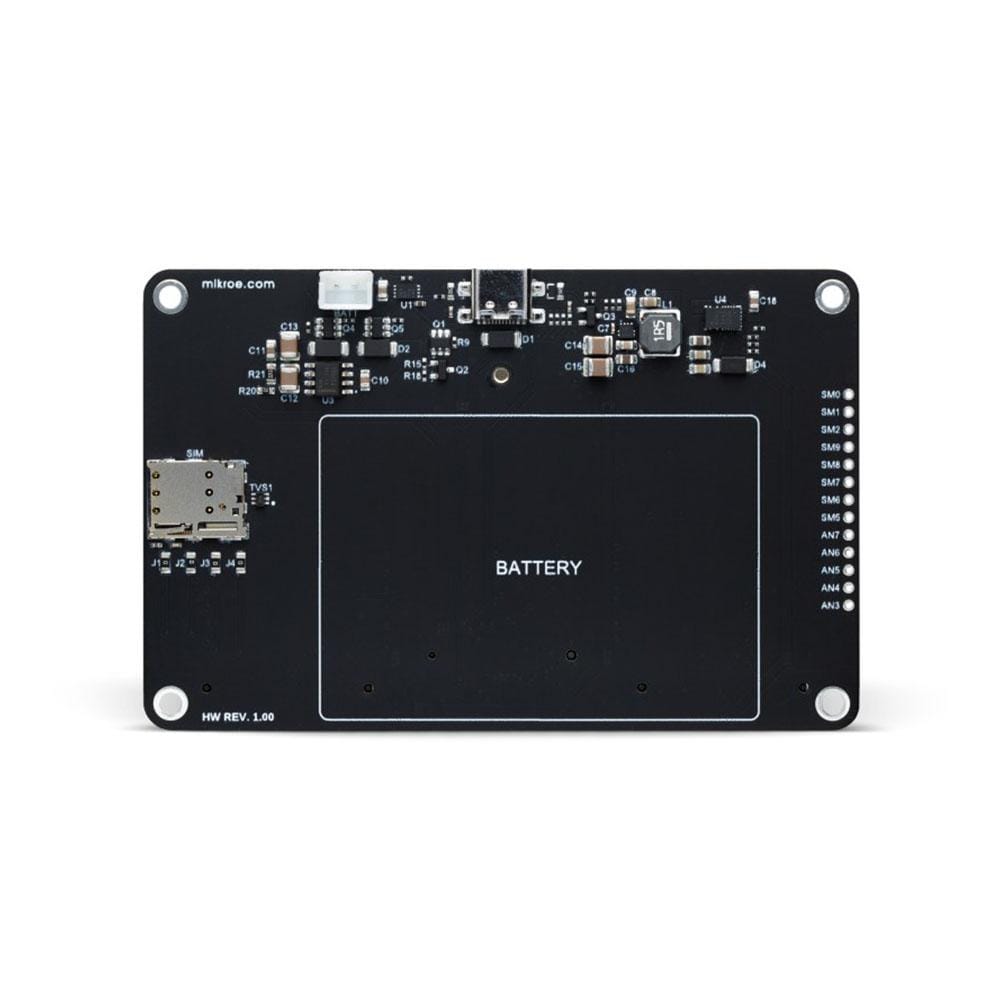
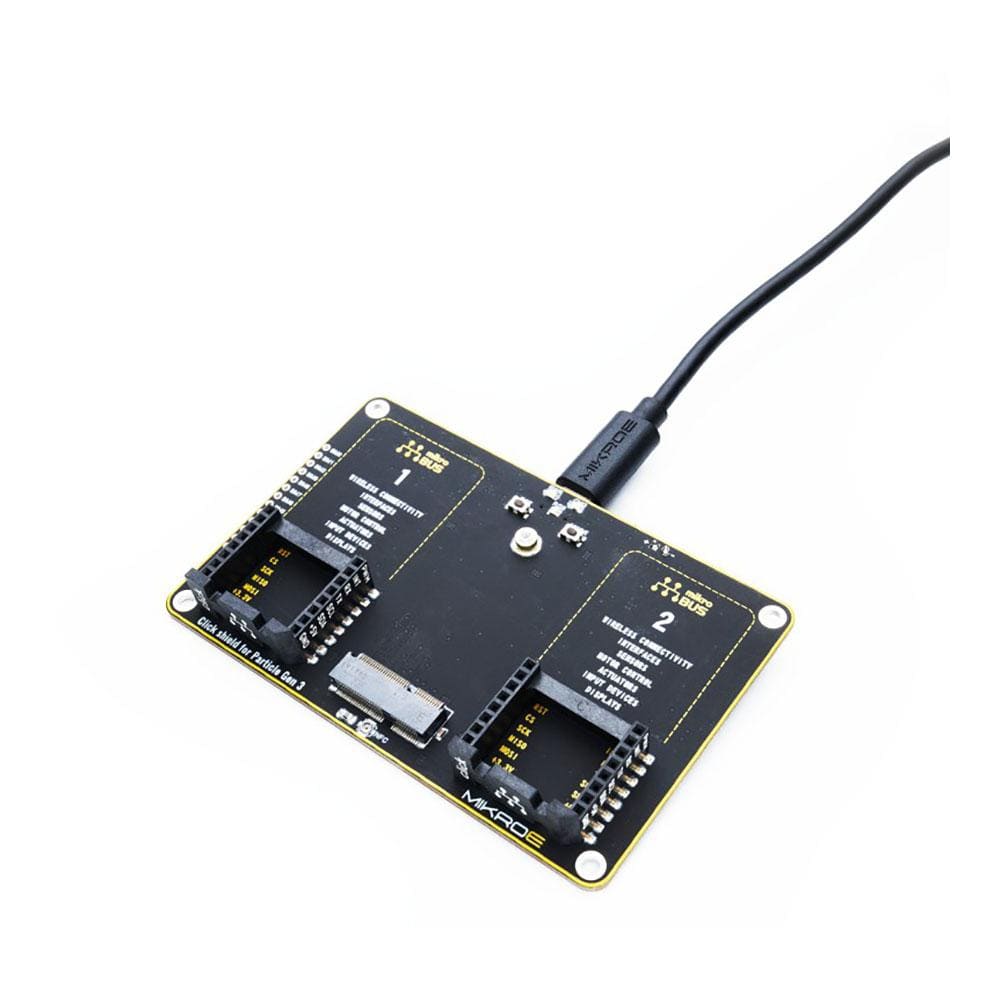
Overview
The Click shield for Particle B Gen 3 is the perfect way to expand the functionalities of your development board compatible with Particle's B series of cellular IoT modules. It provides two mikroBUS™ sockets to add any functionality from our ever-growing range of Click boards™. We are fully stocked with everything, from sensors and WiFi transceivers to motor control and audio amplifiers.
The central part of this Shield’s design includes the M.2 (NGFF) SoM connector, two mikroBUS sockets, a connector for the LiPo battery, NFC antenna, RGB LED, RESET, and MODE buttons, with an additional power supply unit located on the bottom side of the board. It comes with an onboard USB type C connector and a battery connector for backup power supply, including enough power in case you want to switch modules in the future.
This development platform provides users with an effortless and common way to combine the Particle's B series of cellular IoT modules board with their favourite Click boards™ in their upcoming projects.
Note: Particle's B series of cellular IoT modules are not included in the package.
Downloads
Das Click Shield für Particle B Gen 3 ist die perfekte Möglichkeit, die Funktionalitäten Ihres Entwicklungsboards zu erweitern, das mit der B-Serie von zellularen IoT-Modulen von Particle kompatibel ist. Es bietet zwei mikroBUS™-Buchsen, um beliebige Funktionen aus unserem ständig wachsenden Angebot an Click Boards™ hinzuzufügen. Wir haben alles im Sortiment, von Sensoren und WiFi-Transceivern bis hin zu Motorsteuerung und Audioverstärkern.
Der zentrale Teil des Designs dieses Shields umfasst den M.2 (NGFF) SoM-Anschluss, zwei MikroBUS-Buchsen, einen Anschluss für den LiPo-Akku, eine NFC-Antenne, eine RGB-LED sowie die Tasten RESET und MODE und ein zusätzliches Netzteil auf der Unterseite der Platine. Es verfügt über einen integrierten USB-Typ-C-Anschluss und einen Akkuanschluss für die Notstromversorgung, einschließlich ausreichender Stromversorgung für den Fall, dass Sie die Module in Zukunft austauschen möchten.
Diese Entwicklungsplattform bietet Benutzern eine mühelose und allgemeine Möglichkeit, die zellularen IoT-Modulplatinen der B-Serie von Particle in ihren kommenden Projekten mit ihren bevorzugten Click Boards™ zu kombinieren.
Hinweis: Die Mobilfunk-IoT-Module der B-Serie von Particle sind nicht im Paket enthalten.
| General Information | |
|---|---|
Part Number (SKU) |
MIKROE-4506
|
Manufacturer |
|
| Physical and Mechanical | |
Weight |
0.04 kg
|
| Other | |
Warranty |
|
Country of Origin |
|
HS Code Customs Tariff code
|
|
EAN |
8606027382390
|
Frequently Asked Questions
Have a Question?
Be the first to ask a question about this.

